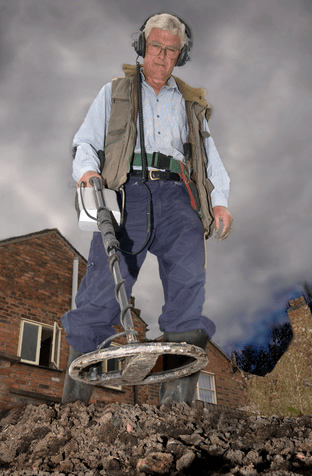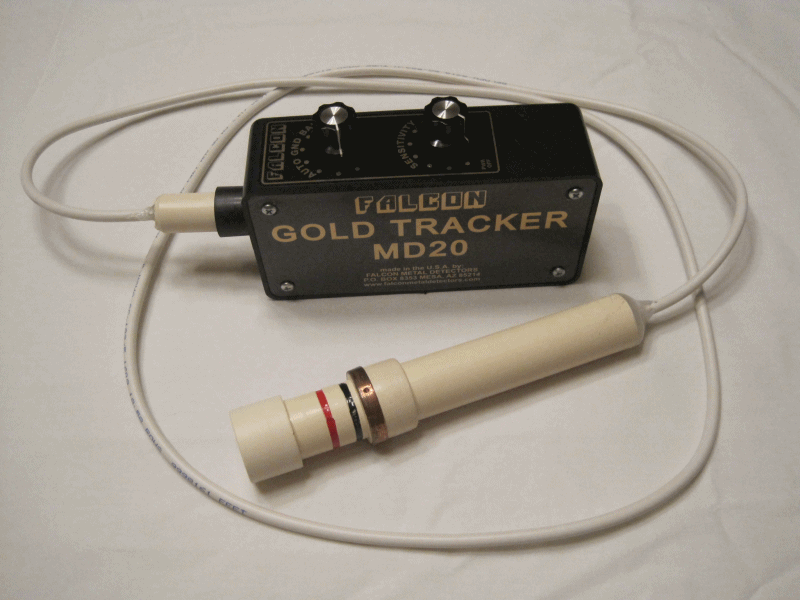 Metal detectors are used by recreational and professional gold prospectors. The term electronic prospecting is used in the literature to denote the use of metal detectors to find gold. Typically these metal detectors are used to discover placer deposits and isolated gold nuggets and flakes that are placer in origin.
Metal detectors are used by recreational and professional gold prospectors. The term electronic prospecting is used in the literature to denote the use of metal detectors to find gold. Typically these metal detectors are used to discover placer deposits and isolated gold nuggets and flakes that are placer in origin.
Metal detectors detect metals in the ground by transmitting an electromagnetic field into the ground from their search coil. Any metal objects within the electromagnetic field become energized and retransmit an electromagnetic field of their own. The search coil then receives the retransmitted field and alerts the user.
There are two different types of metal detectors on the market today for gold prospectors: Beat Frequency Oscillators (BFO) and Very Low Frequency Detectors (VLF).
The Beat Frequency Oscillator metal detectors are the simpler of the two but they are not as common today because of the recent advancements of the VLF detectors. The BFO’s have 2 main settings: one for metals and the other for minerals. The BFO detector recognizes the metals as targets which conduct electricity such as copper, gold silver and iron. Minerals are targets that are magnetic but are non-conductive such as magnetic black sands. These detectors are very good at sounding out highly mineralized ground, but the highly mineralized ground tends to block out reading traces of gold which lie underneath. This interference results even in the presence of very low levels of magnetite and block out the signal of a gold nugget within the target area. This is especially problematic because gold targets are often associated with highly mineralized ground. However, if the operator takes this into account, he/she can use this to his/her advantage to find mineralized areas that have the potential for containing gold.
The Very Low Frequency Detectors (VLF) have the advantage over the BFO’s in that they have circuitry which is able to cancel out the interference from highly mineralized ground. They are able to look past this interference and detect metal objects such as gold. The VLF is more suited for finding gold deposits directly. However, the gold targets still have to be large enough or located close enough to the surface to be detected.
 A metal detector like the Falcon Gold Tracker that is popular with local British Columbian prospectors. Typical of all metal detectors it comes equipped with a search coil for transmitting and receiving electronic fields, a battery and control box. When a target is detected, it produces an audible sound. Like other modern detectors, it comes with cards containing standardized amounts of gold, which are used to calibrate the instrument.
A metal detector like the Falcon Gold Tracker that is popular with local British Columbian prospectors. Typical of all metal detectors it comes equipped with a search coil for transmitting and receiving electronic fields, a battery and control box. When a target is detected, it produces an audible sound. Like other modern detectors, it comes with cards containing standardized amounts of gold, which are used to calibrate the instrument.
The downside of metal detectors is that they are not very good at picking up gold. No metal detectors are able to pick up gold dust, but are capable of picking up nuggets and even flakes of gold. Nevertheless, despite the limitations of metal detectors, electronic prospectors have been able to overcome their drawbacks and have used metal detectors to their advantage for prospecting.
